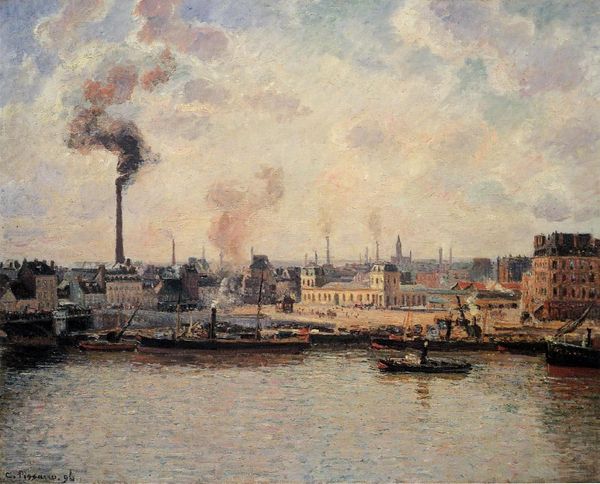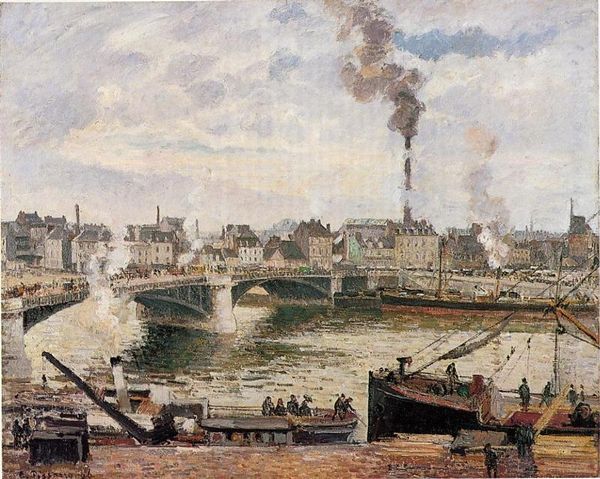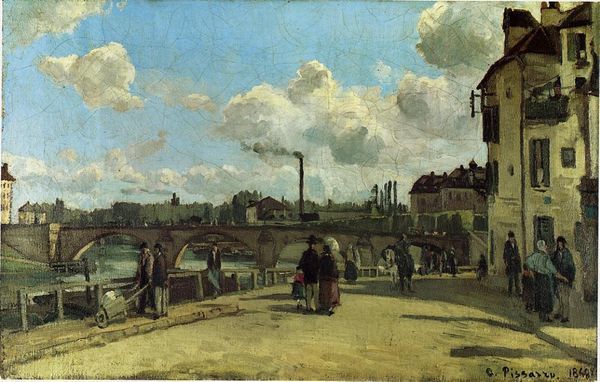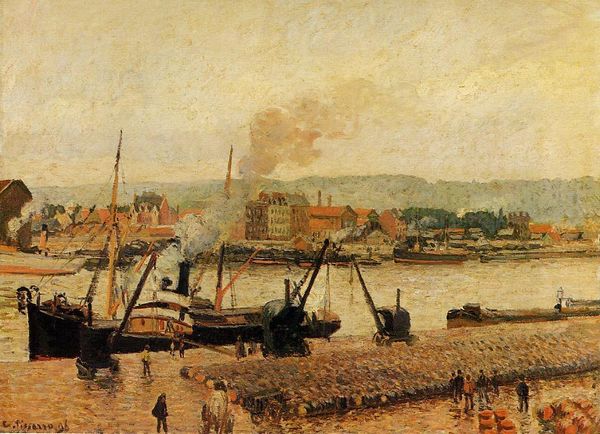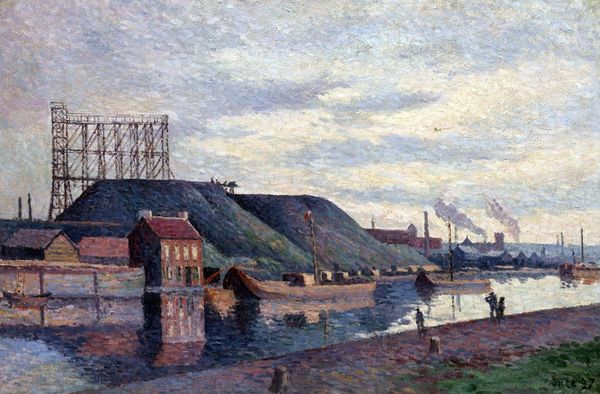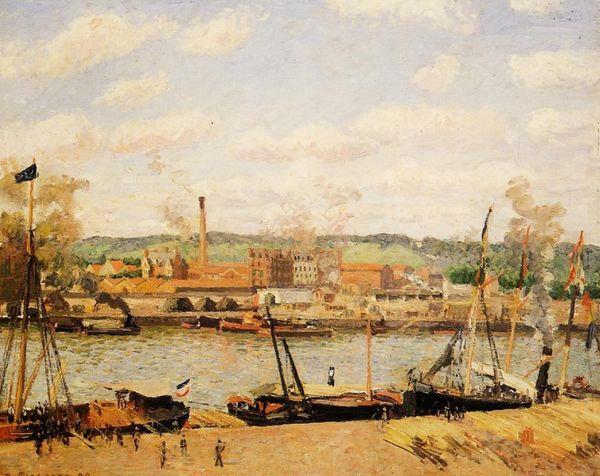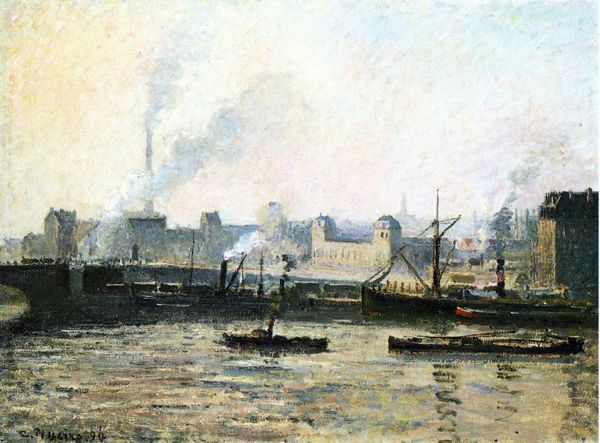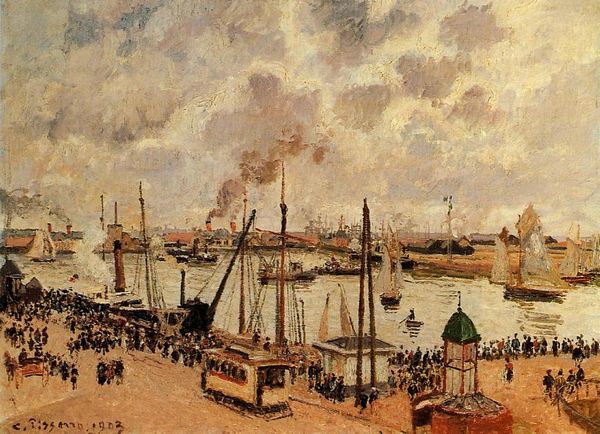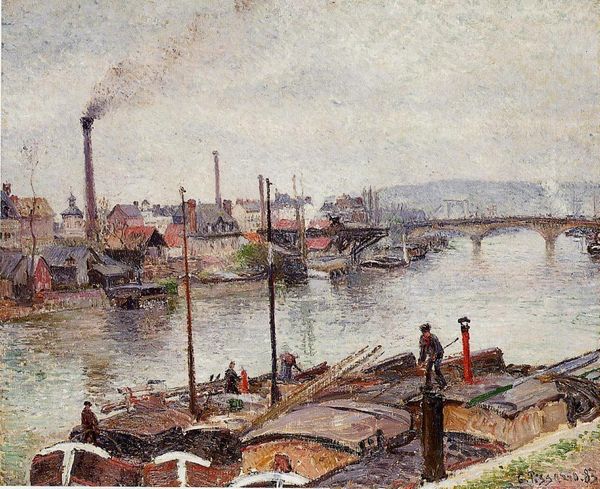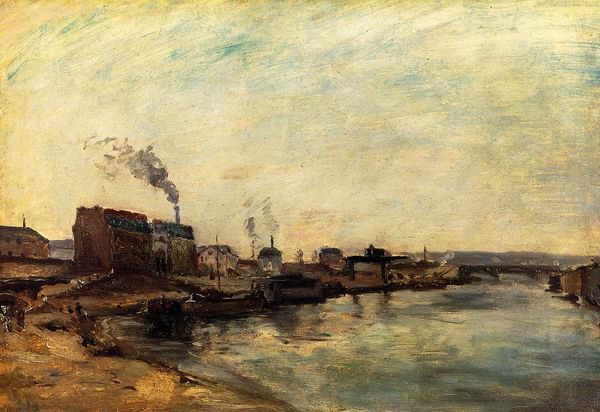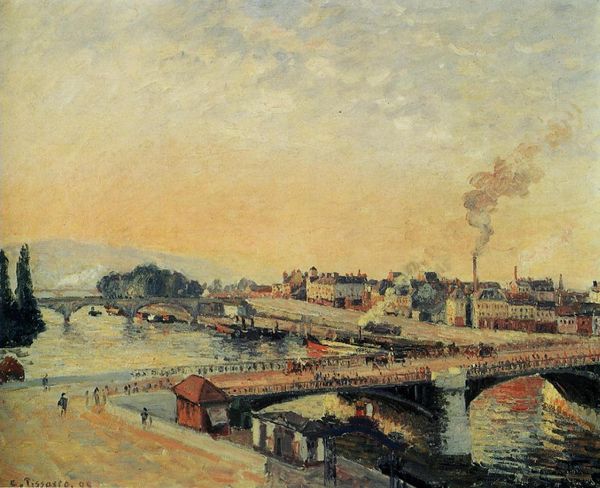
Dimensions: 65 x 81 cm
Copyright: Public domain
Editor: Here we have Camille Pissarro’s “Rouen, Saint Sever, Afternoon,” painted in 1898 using oil on canvas. The brushstrokes create a kind of hazy effect, softening the industrial landscape. How would you interpret that choice? Curator: It’s interesting how Pissarro juxtaposes the soft brushwork with the harsh realities of industrialization. That single chimney, a modern Tower of Babel, dominates the composition. Note how its verticality clashes with the horizontal flow of the river. It symbolizes, doesn't it, mankind's ambition and also perhaps, our alienation from nature. Editor: That makes me think about the boats in the foreground; they’re clearly part of the industrialized world, but also seem dwarfed by the cityscape. Curator: Exactly! Those boats, once symbols of exploration and freedom, are now mere carriers of industry, subservient to the demands of a growing city. Pissarro seems to be asking us, what price progress? Can beauty still be found amidst industry, or does it forever alter our perception? Editor: I didn’t initially read so much symbolism into it, but seeing how these images play off each other gives me a different perspective. Curator: The cultural memory embedded within these seemingly simple elements elevates the piece. The water itself, often associated with fluidity and change, now reflects a static, industrial skyline. Does this not hint at a disruption of natural cycles, of established orders? Editor: It does. Seeing this landscape transformed into something laden with symbols gives me a newfound appreciation for how artists reflect their changing environments. Curator: Indeed. And the ongoing dialogue between man and nature continues to inform artistic expression.
Comments
No comments
Be the first to comment and join the conversation on the ultimate creative platform.
